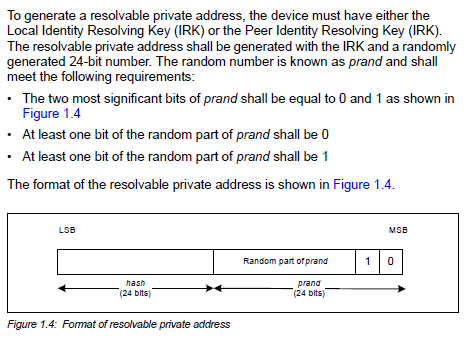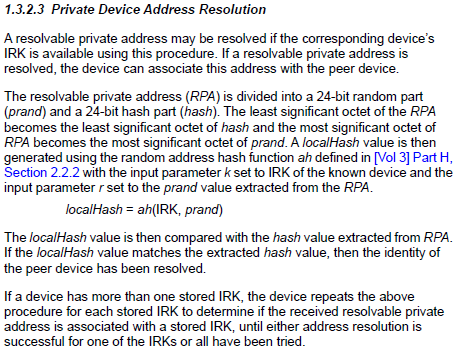Hi all,
I use nRF52832-QFAA, S132 2.0.0, SDK 11.0.0, IAR 7.5 under Windows
Upon connection, I am trying to resolve the peer "random private resolvable" address (not for whitelisting, just to check who I am connected to).
I have most information needed, including the IRKs array.
I have used a few different "resolving" functions, including im_address_resolve() in id_manager.c (belongs to the peer manager in sdk 11).
This example function actually just checks 3 bytes...
It successfully decrypts the higher 3 bytes of the address and compares it with the original lower 3 bytes.
But...
1) They are not partly nor wholly the Bluetooth MAC address of the Android tablet I am using as central.
2) How do I obtain that address? I still don't know.
I have also modified the function to handle all 6 bytes...
The Android tablet's Bluetooth MAC address is 80 4E 70 0F 05 9C
The passed structure:
The received randomized address is (ten 00 then) 7E 82 66 88 8F D8
The received key is 25 29 EF 50 0B 2C 45 66 85 16 95 65 0C D3 AE 1C
The result is (ten "don't care" then) 00 8B D1 34 EA BF .. which does not match the MAC
Can someone help?
Thanks,
Gil



